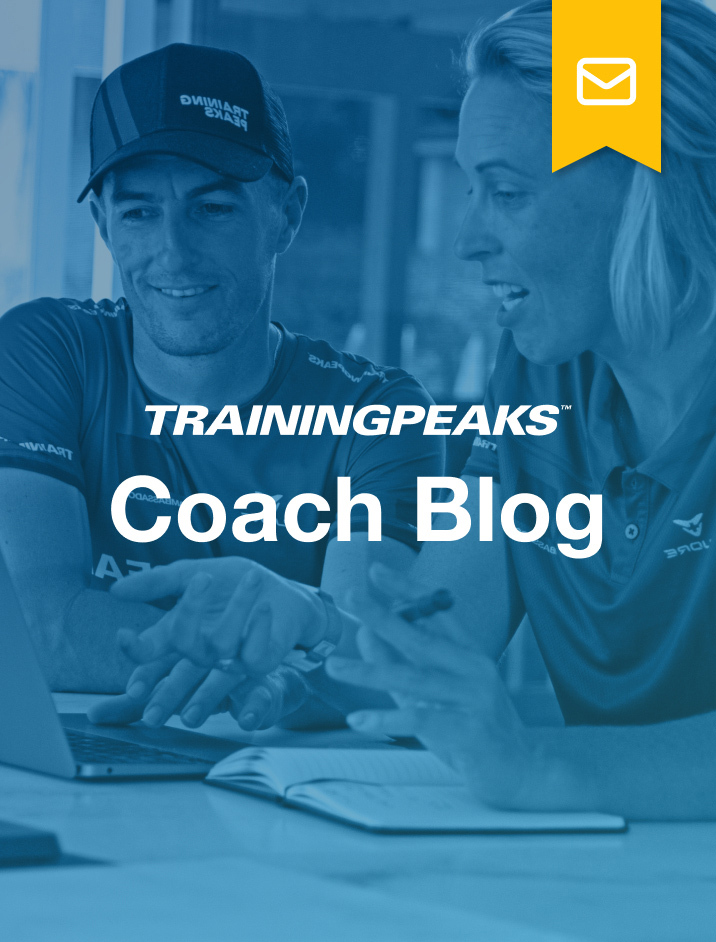The trainer is an incredibly valuable tool when it’s properly used to leverage its advantages.
While many riders jump on the trainer and try to mimic their outdoor riding schedule, I like to take a good, hard look at it from the perspective of an exercise physiologist. As a result, many of my riders at Human Vortex Training use trainer rides year-round and his has led to some incredible improvements.
The following tips have helped riders who used to hate the trainer learn to appreciate it (in its proper role), allowed athletes to “train smarter, not harder”, and helped athletes crush their opposition from spring to fall.
Here’s how I’ve implemented the trainer over the last 11 years, and how you too can maximize your athletes’ time for better results.
1) Reduce total ride time for “long” rides by 20 percent.
This tip has the potential to be misunderstood, but it is very important. If we take a look at a four-hour endurance ride outside, we’d see that somewhere between 15 to 25 percent of total ride time is actually spent coasting or at a standstill. Think about all of the variations in terrain, wind, road conditions, traffic, and time at stop lights.
On the trainer, we are consistently pedaling in order to keep the power up. This leads to greater stress on the neuromuscular and cardiovascular systems, and is part of the reason why some athletes tend to overshoot their ability.
2) Aim for rides under two hours.
It’s not the quantity of the work, it’s the quality of the work.
This is one of the biggest sources of improvement for athletes I have coached coached over the last decade. I have only prescribed consistent rides longer than two hours to a select few, and those few have been professionals. Most riders I work with have mid-week workouts on the trainer that are 65 to 95 minutes long, and range from new cyclists to those chasing podiums.
The trainer, regardless of what mode it is in, offers a completely controlled environment (minus your toddler, cat, or dog wanting to join in). From a physiological standpoint, riders can can achieve exactly the work prescribed in exactly the cadence and power needed. That allows trainer rides to be far more potent than the open road.
 | Want an in-depth look at strength training for triathletes?Sign up for a free trial or take the entire Strength Training for Triathlon Success course by Coach Menachem Brodie. |
3) Get some airflow.
For those riding in cold climates, this is extremely important. If your athletes train in a cold environment, the chances are high that their outdoor rides will also be cold until the spring. To promote specific adaptations to imposed demands (in this case, the ability to train and ride in the colder air), coaches should prescribe athletes to keep cool to improve performance on those cold, winter rides.
I recommend a two-fan setup, (one in front of you, and another at your hip) because of the potential for cardiac drift. This occurs when there is not enough air movement to remove the hot, moist air next to our body produced by sweat. For those training with heart rate instead of power, this is especially important. Stagnant air could artificially raise heart rate, and will lead decreased effort when your athlete needs to push.
4) Don’t get some airflow.
Yes, I’m contradicting myself here.
There are times where we do not want much more than a small fan. In particular, I recommend this approach for athletes on the trainer in the summer or who race in a hotter temperatures. Riding with a smaller fan allows the body adapt to higher temperatures by increasing blood plasma levels.
Coaches should consider the time of year and where athletes are in their training season. If athletes are in a climate that is typically cooler year-round, warmer rides may be nice to prescribe every three to four weeks for two to three rides to add an extra punch in their training. Overdoing it is probably not the best idea, as riding outside will feel different than their trainer.
5) Include “group races” with tools like Zwift.
Those I coach are always surprised when I add a workout titled “Crush Legs on Zwift/Trainer” every two to four weeks in their training plan because, in contrast, during the summer I remind them to hold back on group rides nearing peak races.
But, during the winter? I love prescribing some practice to “pin a number on” and push hard. How else can athletes get the right amount of training stress and see their own improvement?
Riding on Zwift, CVR, or any similar online platform can be a lot of fun, and should be part of any well-designed training plan. At the same time, remember to keep yourself in check and prescribe a structured program.
6) Use “extra time” for strength training with kettlebells.
The “extra time” earned from shorter trainer rides is a perfect opportunity to incorporate some strength training into your athletes’ plan. Kettlebells are my favorite tool for at-home strength training. They’re incredibly versatile, can be used for everything from endurance-focused strength to power and speed-strength development, and don’t take up a lot of space.
A single kettlebell around 15 or 25 pounds is usually enough for beginners, and, matched with a yoga mat or something to kneel and lay down on, provides many opportunities for bodyweight and weighted exercises.
Using the trainer intelligently as a part of a year-round training approach can and will significantly boost your athletes’ fitness and riding ability. Just remember to spend between one and two hours a week dedicated to working on your bike handling skills once spring arrives. Bike handling drills should be a staple in your riding schedule year-round, but should get special attention coming off of a winter on the trainer.




